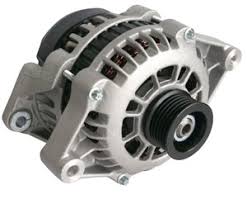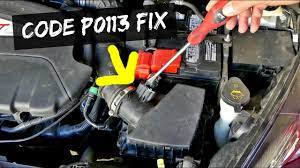Since the alternator supplies your vehicle’s electrical needs, when it begins to lose its potential, so do the car’s accessories that draw on that electricity. Your car may begin to experience erratic symptoms ranging from dimming or extremely bright headlights and dash lights, to speedometers and tachometers that simply stop working for no apparent reason.
Alternator is known as a key component in running the electrical systems in a car. The alternator takes the energy from the crankshaft and turns it into the electricity that is stored in the battery of your car. When your car is running the alternator helps to power the different electrical systems in your car and keep your battery charged.
When your alternator begins to fail it can cause a variety of different electrical problems in your car, and eventually cause a breakdown. Alternators can go bad suddenly or slowly over time. If your alternator is slowly going bad over time there are some warning signs you can look out for. The main functions of an alternator are to generate electricity for the electrical components of the vehicle and to charge its battery. The alternator produces this electrical energy by converting mechanical energy. If you were to try and start your vehicle without an alternator, the battery alone would not be able to produce enough power to get the engine running.
Even if you had a new car battery and were lucky enough to turn the engine over, it would probably run for about 10 minutes before the power cuts out. The alternator is necessary to keep the battery recharged and to alternate the electrical current throughout the many components of your vehicle to keep them powered.
- The Alternator Warning Light Turns On
On this case, the alternator light will suddenly come on. A dash light is likely the most common sign of an issue with your charging system. Most cars built within the last decade should include a dedicated alternator warning dash light to signal an alternator issue. Some cars use their battery light or check engine light, but others may show “ALT” or “GEN,” implying the alternator.
This battery warning light connects to the computer systems within your vehicle to monitor the alternator’s voltage output. If the alternator output rises or dips above or below a set limit, you’ll start experiencing problems with your electrical system, and the light will turn on.
A healthy alternator should have a voltage output of between 13V and 14.5V. As you use certain electrical components, like the headlight, windshield wipers, and the radio, your alternator needs to work harder to maintain the necessary voltage. If your alternator is on the fritz, the voltage will either be above or below the set level, activating the warning light. However, if your alternator is just starting to show problems, the warning indicator light may flicker. Your ability to look at your dash board is very important, in the sense that it will help you notice danger or a fault from the car. Just like the alternator warning light suddenly comes on to show that the alternator is faulty.
- Flickering Lights
On the previous page, you learned that dim exterior and interior lights are common symptoms of alternator trouble. If your lights aren’t actually dim, they might be flickering instead. These two symptoms often go hand in hand, but not always. If your lights are bright, then dull, then bright again (either on a regular beat or seemingly at random) then you definitely have a problem with your electrical system, and the alternator is the most likely culprit. The reasoning is the same as if the lights were simply dim — the alternator just isn’t generating enough juice to keep the lights going at full strength, and instead of dimming all of the lights in response, your car is trying, and failing, to maintain the proper lighting output.
If you want to be sure that the problem is the alternator, rather than something else in the electrical system, simply look for a pattern. Can you pinpoint that the lights flicker when you do something else that draws electricity, such as turning on the radio, adjusting the climate control or using your power windows. That will be the key to helping you narrow down the possibilities, since it demonstrates your lights are flickering in response to the extra load on the system. As you continue to read through this article, you’ll see that a failing alternator simply can’t keep up with all of the things you ask your car to do during a typical drive.
- Strange Noises
Sometimes there may be some noise in the car, some of which are completely normal while others can indicate serious problems. One sound common to a bad alternator is a growling or whining noise. In conjunction with the crankshaft pulley, a drive belt or serpentine belt runs the alternator. Typically, the alternator pulley spins about two or three times faster than the crankshaft pulley to produce the power necessary at lower speed.
If the alternator pulley isn’t properly aligned with the drive belt, or the alternator bearings are wearing out, it generally creates a growling or whining noise, indicating you may have an alternator problem. Be careful to avoid leaving a bad alternator on for so long that it causes damage to your engine. If this happens, you’ll probably start hearing rattling from inside your engine caused by failed engine bearings.
- Difficulty in Starting
Aside from an alternator problem, many other issues can also cause frequent difficult stalling and difficulties in starting your car. Things like a bad battery or a faulty fuel pump can result in similar symptoms, so be sure to check everything else going on with your vehicle to find the root of the problem. If the alternator is causing the issue, one potential reason is that it’s not charging your battery properly, resulting in a dead battery. If your car battery lacks charge, it won’t have sufficient power to turn your car on. If your car is stalling even after you’ve turned it on, the spark plug system may not be receiving enough electricity from the alternator to keep the engine running.
- Dim Lights
A failing alternator could create electrical problems that could lead to erratic headlight issues, like frequent dimming or extreme brightness.
Since the alternator supplies your vehicle’s electrical needs, when it begins to lose its potential, so do the car’s accessories that draw on that electricity. Your car may begin to experience erratic symptoms ranging from dimming or extremely bright headlights and dash lights, to speedometers and tachometers that simply stop working for no apparent reason.
Your exact experience is usually dependent on a number of factors. The first is how well the alternator is still producing power and also where it is in its death cycle. The second is how your car is programmed. In most new vehicles, auto manufacturers have a sort of pre-programmed priority list for where electricity will be sent just in case an alternator problem arises. This is usually based on safety considerations. For example, your car’s heated seat will turn off or the radio will quit before the head lights dims and fade away. That’s because you need to be able to see in order to safely pull over and stop if your car suddenly dies — your radio and heated seats working simply become secondary at that point.
Read Also: Top 7 Signs of Bad Alternator
Additionally, broken or loose connection is another factor. In this case, everything with your car’s alternator seems to be alright, no belt issues or other visible signs of trouble but the car’s battery is dead, as is most of the car’s electrical equipment. That might mean that the alternator is producing electricity, but it’s either not going anywhere or it’s not the right type.
Alternator electricity is piped through large cables and smaller wires. Any problems within the wires, cables or connections at either end can reduce or stop electricity from getting through. Occasionally, a symptom of this issue might be brighter lights, as the alternator produces more energy to overcome the resistance in a bad wire or a broken or loose connection. This symptom is usually accompanied by the smell of hot wires, too. Higher resistance within a wire creates heat, similar to the way an electric burner on a stove heats up by resisting the flow of electricity.
Another problem could be the alternator’s diode rectifier. Alternators produce alternating current (AC) electricity in three phases, but a car’s accessories require direct current (DC) to operate. The rectifier changes the current from AC to DC Without that critical component operating properly, the electricity the alternator produces can’t be used.
What happens when alternator goes out?
If the alternator dies, the battery doesn’t get a charged and rebuild its power storage from any drain it had to cover. When the car is running, the charging system (alternator, voltage regulator) should recharge the battery and provide sufficient electrical power to the vehicle. The battery serves as a backup.
How long can you drive with bad alternator?
When you drive without a functioning alternator, your vehicle can only go for around Twenty-five miles before the battery is empty if you had a fully charged battery. But the fact remains that is not advisable to drive such a car in that deplorable condition to avoid further damage







